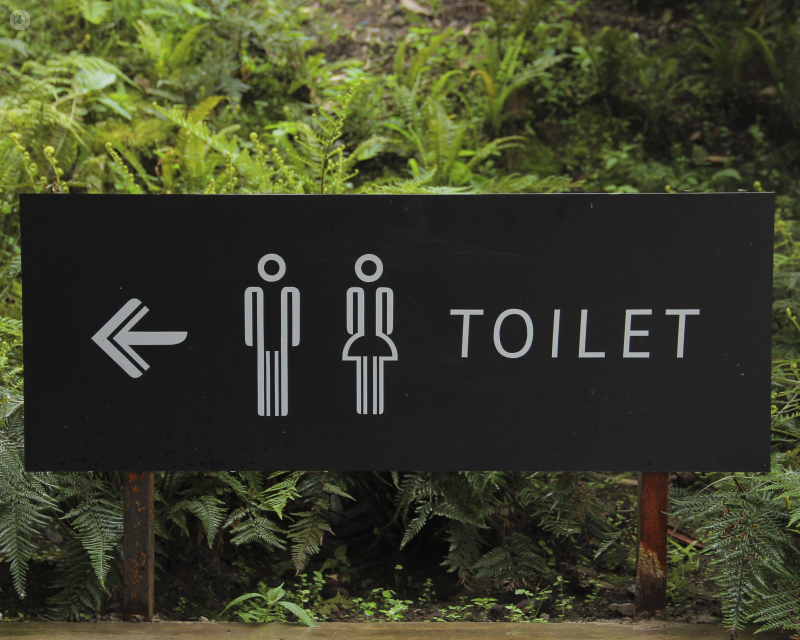Urinary Incontinence during the COVID-19 pandemic
Escrito por:A rush to the bathroom due to urinary incontinence can sometimes feel as though it occurs at the worst time, and with the current coronavirus situation, even more so. Thankfully, treatment for urinary incontinence is available.

We spoke with leading urologist, Mr Vibhash Mishra, to learn more about the condition and found out how non-surgical forms of treatment are being prescribed remotely during this time.
What is urinary incontinence?
Urinary incontinence is involuntary loss or leakage of urine, which is socially inconvenient.
What causes urinary incontinence?
There are two main types of urinary incontinence and the cause depends on what type of incontinence the patient has.
- Urgency incontinence – This type of incontinence is due to an overactive or irritable bladder that is unable to stay relaxed for any length of time and goes into intermittent spasms, causing urgency with or without incontinence.
- Stress incontinence – This type of incontinence is seen mostly in women after childbirth due to a weak pelvic floor. It happens whenever the patient’s abdomen (tummy) is subjected to any physical stress such as from coughing, sneezing, jogging, trampolining etc.
- Mixed incontinence – This means the patient has both types of symptoms as explained above.
- Overflow incontinence – This uncommon type of incontinence is usually seen in association with a very full bladder as a result of prostatic obstruction in men.
How is urinary incontinence diagnosed?
Most cases of urinary incontinence can be diagnosed adequately with a good history, physical examination, urine test, with or without a bladder scan. Sometimes we use more specialised tests and tools such as a bladder diary and urodynamics.
How can urinary incontinence be managed at this time of restricted hospital services (Covid-19)?
Restrictions on hospital services have only affected the specialised investigations and surgical management of patients with urinary incontinence. The following steps will benefit a number of women regardless of restrictions on hospital visits.
- (A) Virtual consultation – A virtual consultation can help ascertain the type of incontinence, exclude other conditions such as infection, obstruction and occasionally even bladder cancer and establish if it is safe to prescribe treatment remotely.
- (B) Fluid intake optimisation – Excessive fluid restriction can result in concentrated urine which can irritate the bladder and make the condition worse. It is important to drink a reasonable amount of the right type of fluid. Caffeinated and carbonated drinks should be avoided.
- (C) Bladder re-training – This means delaying urination by using some distraction technique (e.g. counting backwards from 100) when you get the urge to go. You may start by trying to hold off for 5 to 10 minutes to begin with and then work your way up gradually until you can comfortably hold for 2 to 3 hours. This is helpful for patients with symptoms of an overactive bladder.
- (D) Vaginal oestrogen cream or pessary – This can help post-menopausal women with an overactive bladder.
- (E) Drugs – There are a number of drugs available for overactive bladder e.g. Oxybutynin, Solifenacin, Mirabegron etc. If considered safe, a few of these can be tried one after the other until an effective one is found.
- (F) Timed voiding – This means passing urine every 2 to 4 hours by the clock instead of waiting for the urge to urinate. This technique should help women with stress incontinence by ensuring that there is not much urine in the bladder at any given time.
- (G) Weight reduction – Weight optimisation improves continence particularly in cases of stress incontinence.
- (H) Pelvic floor exercises – These exercises strengthen the pelvic floor muscles and therefore, are effective for stress incontinence. To identify the pelvic floor muscles, imagine you are trying to stop your urine flow or stop a bout of diarrhoea. It is those muscles that you are aiming to strengthen. Tighten the muscles and hold for 10 seconds (i.e. count up to 10), then relax for 10 seconds. Repeat this contraction and relaxation ten times. Perform this set of 10 contractions and relaxations at least 3 times a day.
- (I) Urethral devices for insertion – These are tampon-like devices that can be inserted into the urethra to mechanically stop urine from leaking. These need to be removed for urination and then re-inserted. Obviously, these are only to be used by women.
- (J) Incontinence pads – The measures suggested above take time to improve continence. Incontinence pads may be a good way of containing urine leak and preventing embarrassment and inconvenience.
In summary, despite the restrictions imposed by COVID-19, the majority of women with urinary incontinence can be diagnosed on the basis of symptoms reported in a virtual consultation and managed effectively with a combination of non-surgical forms of treatment prescribed remotely.
If you’d like to book an e-Consultation with leading urologist Mr Vibhash Mishra , you can do so via his Top Doctors profile.


